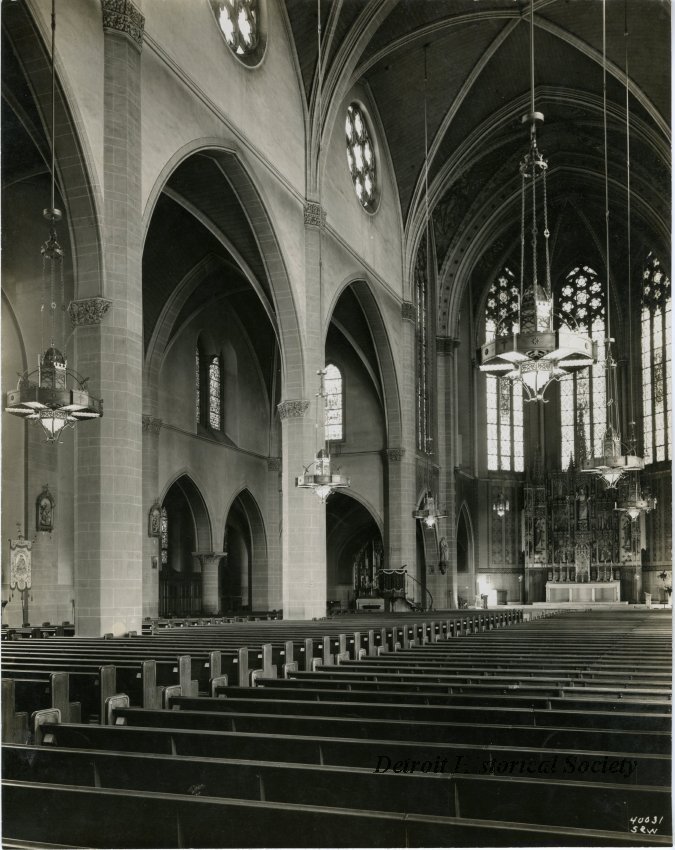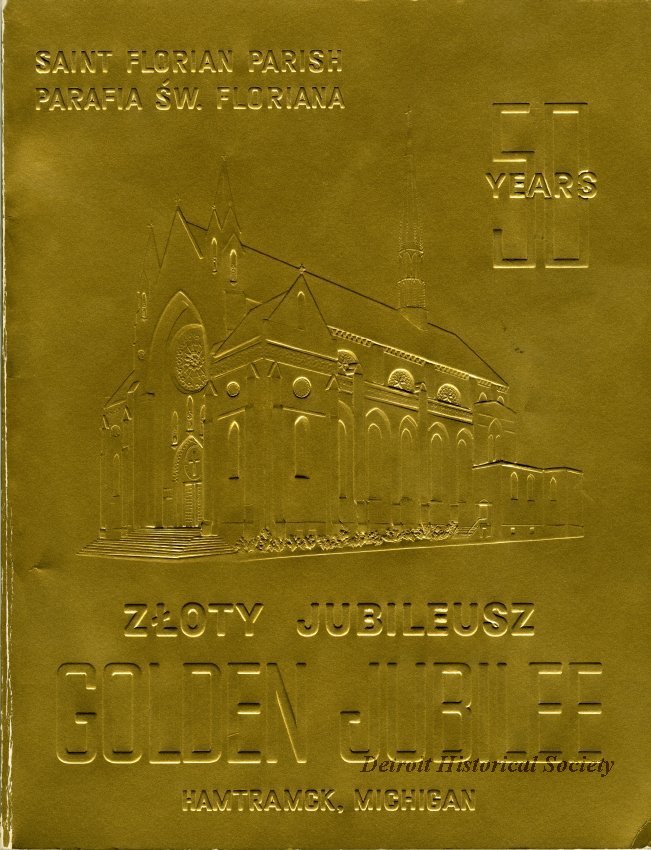The Roman Catholic Archdiocese of Detroit recognized the need for a church to serve the Detroit area's rapidly expanding Polish Catholic community in the Hamtramck area and established St. Florian parish in 1907. Services were initially held in a storefront. Ground was broken for a church building in 1908 and was dedicated on January 10, 1909. As the congregation grew, the original building quickly became inadequate. Parishioners contributed $500,000 to build a larger sanctuary.
Construction of the new church on the block bounded by Florian, Latham, Poland and Brombach Streets, began in January 1926, with the dedication on October 21, 1928. The architect of the church was Dr. Ralph Adams Cram of Boston. He created a modified English Gothic structure that won the American Architect Award in 1929. The church complex included the church building, school, and rectory.
St. Florian Church rises eight stories, nearly 200 feet above street level. The front of the church features a broad Gothic arch flanked by twin spires containing niches with statues. The red-brown brickwork is encircled with several horizontal bands of gray limestone.
The stained glass windows are from two or three different studios. J.M Case Company from Pennsylvania is reported to have designed the altar windows depicting five famous Polish saints—Casimir, Florian, Hedwig, Hyacinth and Stanislaus. Some sources also credit the nave and balcony Rose windows to Case while others say they were designed by the Conrad Schmitt Studios of Milwaukee. The window of the Crucifixion is one of a set of nine windows executed by the Mayer Studios of Munich, Germany.
The main altar and side altars, including one for Our Lady of Czestochowa, are decorated with real gold leaf. The 40 rank, three manual pipe organ was built by the Austin Organ Company in 1928, and renovated in1982.
In 1969, the cardinal archbishop of Kraków, Karol Wojtyła, who later became Pope John Paul II, celebrated Mass at St. Florian.

